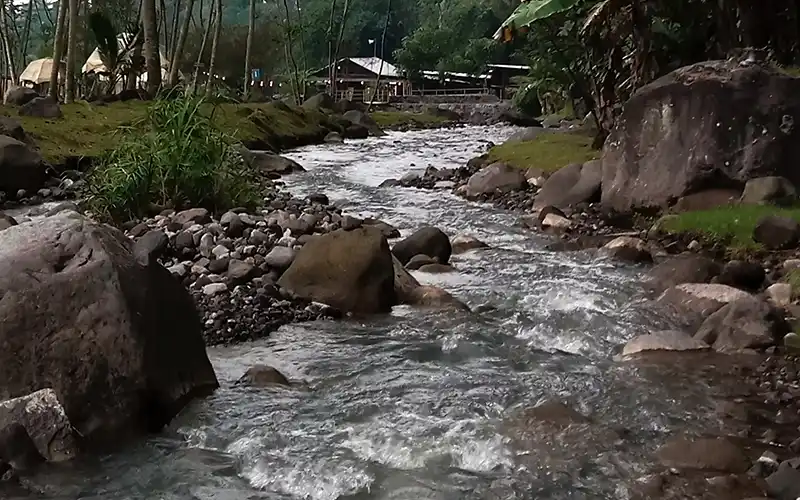Freshwater is at the heart of life on Earth. Rivers, lakes and wetlands cover just a tiny fraction of the planet, but they support everything from food production to wildlife to clean drinking water. They regulate our climate, protect us from floods, and hold cultural and spiritual importance for millions of people. And yet, freshwater ecosystems are disappearing faster than almost any other natural system.
That’s why a bold international effort is now underway – the Freshwater Challenge. It’s the largest global initiative of its kind, with one ambitious goal: to restore 300,000 kilometres of degraded rivers and 350 million hectares of wetlands by 2030. At the same time, the project aims to protect the freshwater ecosystems we still have, while helping countries track and report on their progress more clearly. Launched in 2023 at the UN Water Conference, it’s a country-led initiative with 47 nations already involved, supported by organisations like WWF, IUCN, and Wetlands International.
The urgency is real. Since 1970, we’ve lost about two-thirds of the world’s wetlands. That loss is accelerating, and it’s taking a toll on everything from fish stocks to water quality. Only a third of the world’s rivers still flow freely from their source to the sea. Freshwater species – animals that rely on these habitats – have declined by nearly 85 percent. And more than half the world’s people are expected to face water shortages at least once a year by 2050.
Despite this, freshwater tends to be overlooked in environmental planning and funding. We talk about forests and oceans – and rightly so – but freshwater often slips through the cracks, even though it underpins so many of the same systems. The Freshwater Challenge is about fixing that. It’s about giving these ecosystems the attention, investment and support they urgently need.
To make this happen, the project is focusing on four key areas. The first is monitoring. You can’t restore what you can’t measure. So part of the work involves creating new tools and indicators to help countries track the health of their rivers, lakes and wetlands – and report on that in a way that connects with broader goals on biodiversity, climate and sustainable development.
The second focus is integration. This means helping governments build freshwater protection into everything else they’re doing – from farming to energy to infrastructure. When river basins are treated as a whole, rather than in fragmented bits, it becomes easier to plan restoration efforts that actually work. It also makes better use of water resources and protects communities from disasters like floods and droughts.
Another part of the project is knowledge-sharing. Countries often face similar challenges, so the Freshwater Challenge is setting up peer learning networks and digital hubs where people can share what works and what doesn’t. From grassroots organisations to national governments, the idea is to create a space where solutions can spread quickly and widely – especially those led by Indigenous peoples, women, and local communities who are often on the front lines.
And finally, communication and engagement are at the core. This isn’t just a policy programme. It’s also about building awareness and public pressure for action. That means funding youth-led campaigns, supporting environmental journalism, and giving visibility to stories that don’t often make the headlines. If we want to create a global shift in how freshwater is valued, we need people to understand what’s at stake.
In the US, the project is already making waves. A national rollout known as the America the Beautiful Freshwater Challenge is aiming to restore eight million acres of wetlands and 100,000 miles of rivers and streams by 2030. Work is underway to reconnect and rewild degraded river systems like the Rio Grande, one of the most threatened in the world.
At the same time, the project is looking at how restoration can support other goals. Wetlands and peatlands, for example, store vast amounts of carbon. Reconnecting rivers can also help coastal ecosystems, reduce flood risks, and improve food security. By restoring freshwater systems, we’re not just protecting wildlife – we’re strengthening entire communities.
Of course, the road ahead isn’t simple. Challenges include lack of data, political inertia, limited funding, and siloed thinking across sectors. But the Freshwater Challenge is designed to tackle those head-on, through smarter planning, better coordination, and long-term investment. A $4.4 million grant from the Global Environment Facility has already kickstarted this work, backed by over $10 million in additional funding from participating countries and partners.
Over the next five years, the project will scale up to include dozens more river basins and countries. Restoration sites will be mapped and prioritised. Community involvement will expand. And the tools developed during this early phase will help guide even bigger efforts well beyond 2030.
The Freshwater Challenge represents a turning point. It’s a reminder that nature doesn’t have to keep declining. With the right focus, funding and collaboration, we can reverse the damage and build a water-secure future for everyone – humans and wildlife alike.
For Earth2035, this project fits squarely into our mission. It’s about real action, rooted in science and local leadership, but carried out on a global scale. It’s proof that with enough will – and enough people pushing for change – we really can start to fix the mess we’ve made. One river, one lake, one wetland at a time.

